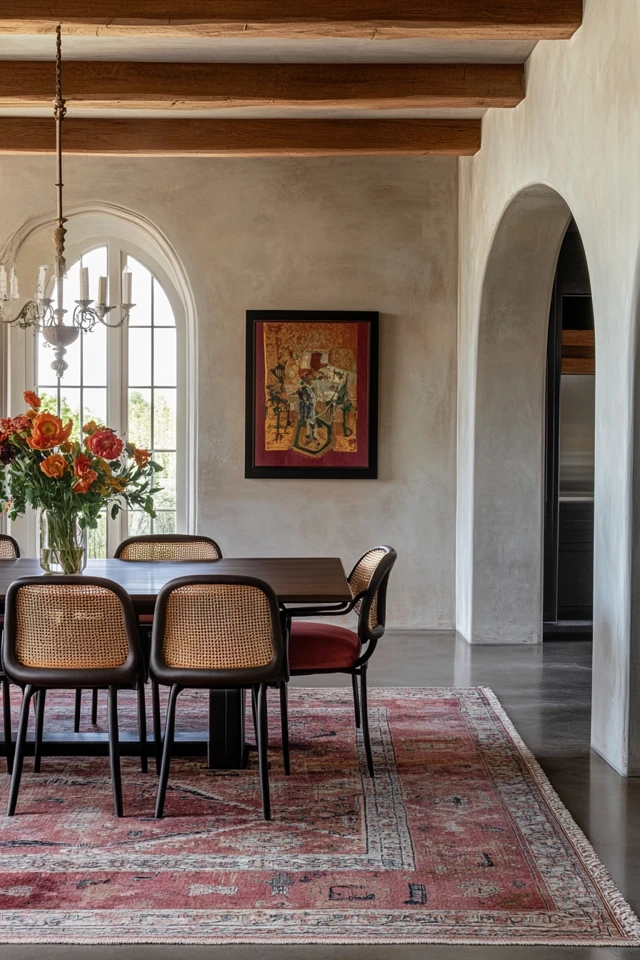Before Reading this Article, Hire Us As Your Designer or Take a Look at My Top 3 Amazon Picks!
If you are looking to blend Amazon's furniture finds with a personalized touch for your space, check out my portfolio, and hire us! You'll get 3 Idea boards, 2 Concept Boards, 2 Realistic Renderings, a Floor Plan, and a Shopping List! Everything's online, plus a 25% discount on your first online interior design project with my Havenly Promo code 4c7441bcfb. With over 2,000 designs since 2017 and top US brand partnerships, your project is in expert hands. US only. Ready to start?
Pop Chart | Architecture of American Houses | 16" ...
$24.95 (as of January 19, 2025 19:23 GMT -06:00 - More infoProduct prices and availability are accurate as of the date/time indicated and are subject to change. Any price and availability information displayed on [relevant Amazon Site(s), as applicable] at the time of purchase will apply to the purchase of this product.)Vintage Architecture Prints, 6 (8x10) Unframed Pho...
$23.49 (as of January 19, 2025 19:23 GMT -06:00 - More infoProduct prices and availability are accurate as of the date/time indicated and are subject to change. Any price and availability information displayed on [relevant Amazon Site(s), as applicable] at the time of purchase will apply to the purchase of this product.)Church of Saint Augustin Paris - Religious Art Dec...
5% OffIntroduction
Architectural features are the foundation of your home’s character. From crown moldings and exposed beams to large windows and unique nooks, these elements create the structure and personality of your space. Coordinating your decor with these features isn’t just about making the room look good—it’s about enhancing the harmony between design and architecture to create a cohesive, visually stunning environment.
I vividly remember working on a friend’s historic home with dramatic arched doorways and intricate ceiling medallions. At first, her modern decor felt disconnected from the room’s old-world charm. By incorporating furniture with curved silhouettes, choosing elegant lighting to complement the medallions, and emphasizing the arches with subtle accent colors, we brought the space into perfect balance. The result was a seamless blend of classic architecture and contemporary style that celebrated the home’s unique details.
In this guide, we’ll explore how to coordinate your decor with architectural features, whether you’re highlighting grand elements or working around tricky spaces. These tips will help you transform your home into a cohesive masterpiece that honors its structure while reflecting your personal style.
The Perfect Design for You
This approach is ideal for homeowners and renters alike who want to create a harmonious relationship between their decor and the architectural elements of their space. Whether you’re living in a modern apartment, a historic home, or a newly built house, these tips will help you:
- Emphasize the standout features that make your home unique.
- Avoid decor choices that clash with or overshadow architectural details.
- Bring a sense of balance and intentionality to your design.
Imagine a living room with floor-to-ceiling windows framed by sleek, minimalist curtains that emphasize the view, or a bedroom where exposed brick walls are softened by textured textiles and warm lighting. These are spaces where decor complements the architecture, creating a perfect union of form and function.
No matter your style or the era of your home, coordinating your decor with its architectural features will help you achieve a design that feels intentional, polished, and uniquely yours.
Picture Gallery
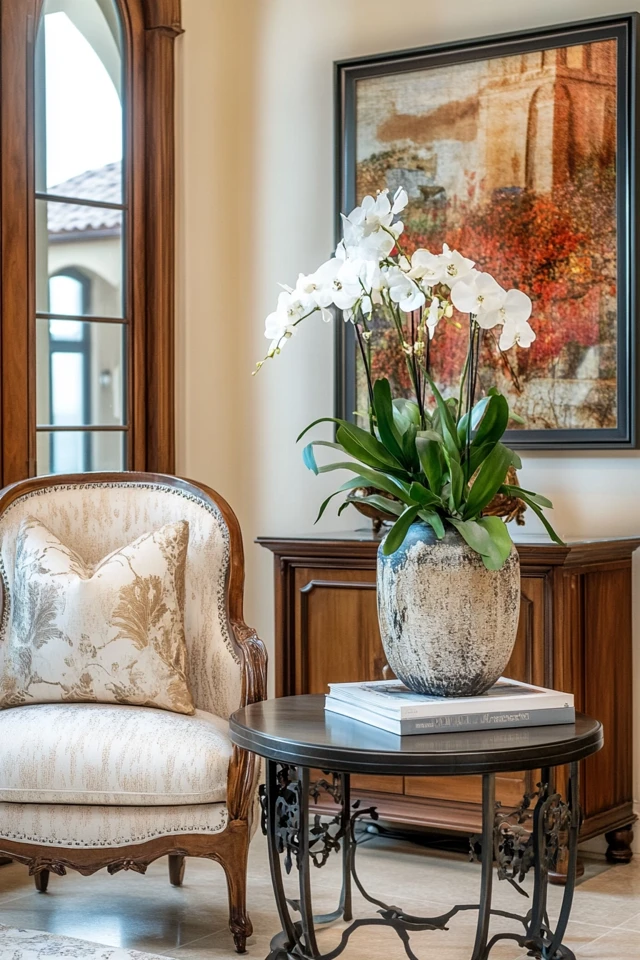
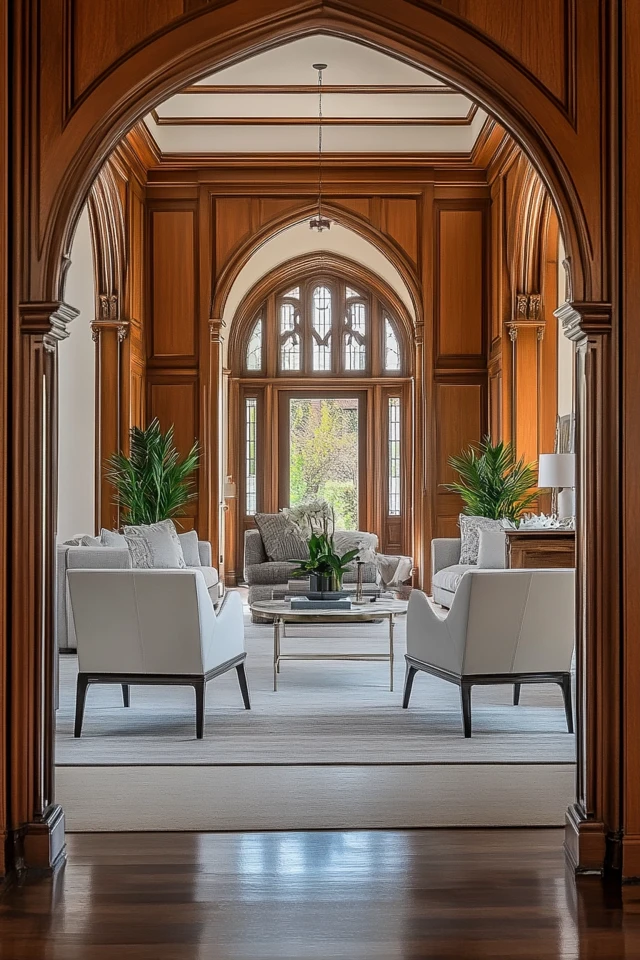

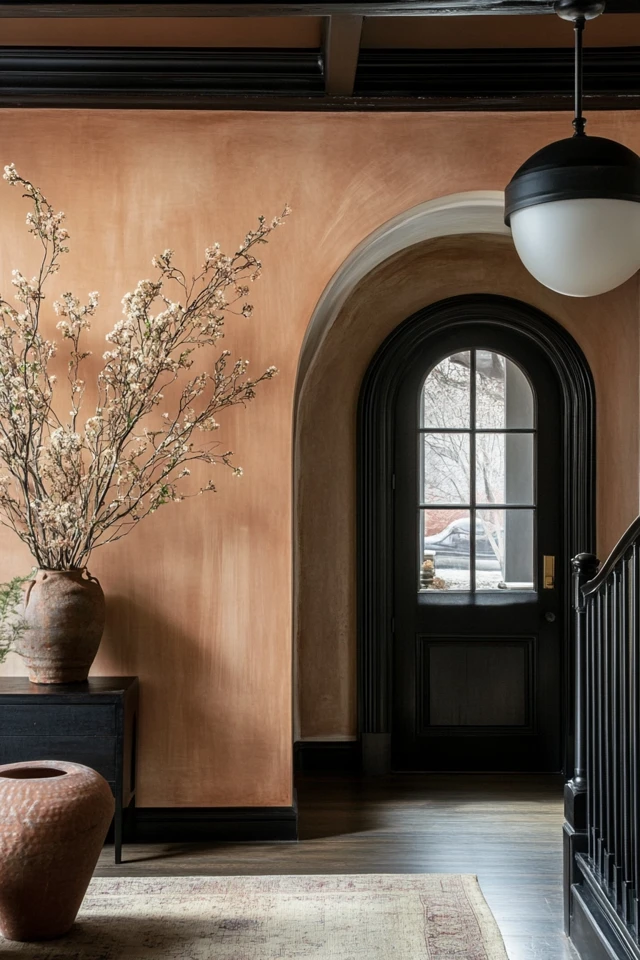
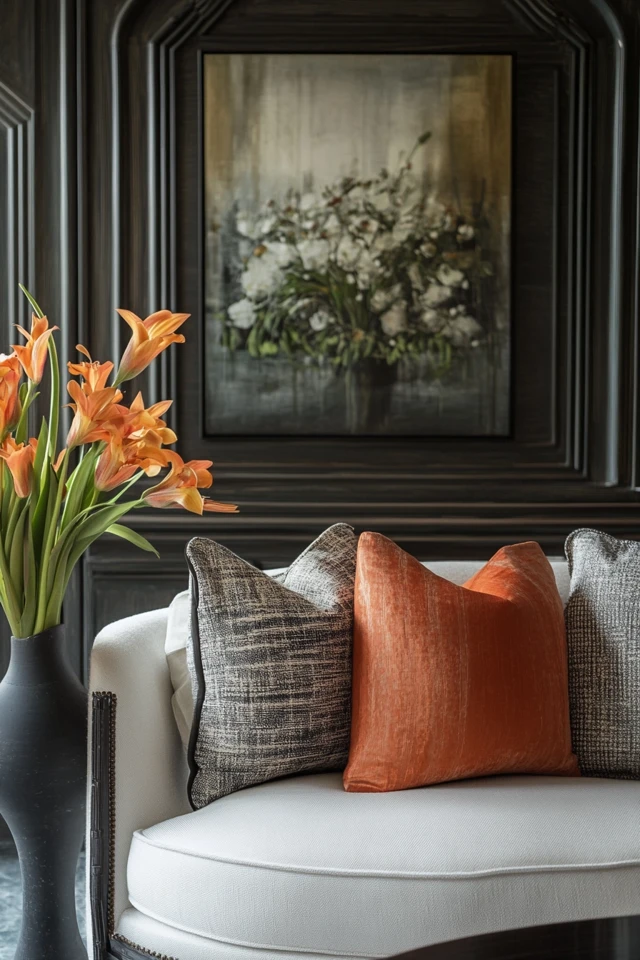
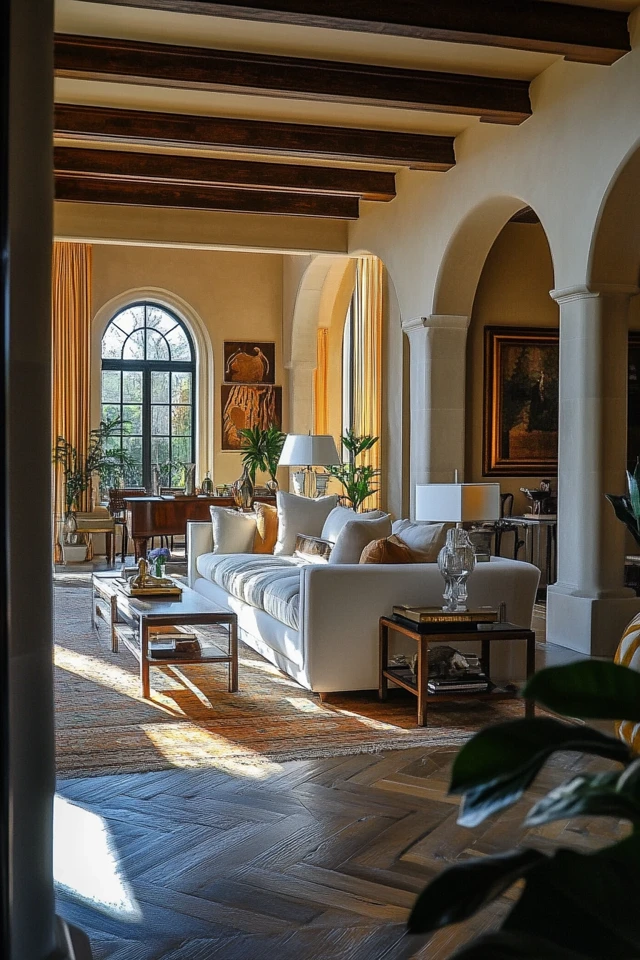
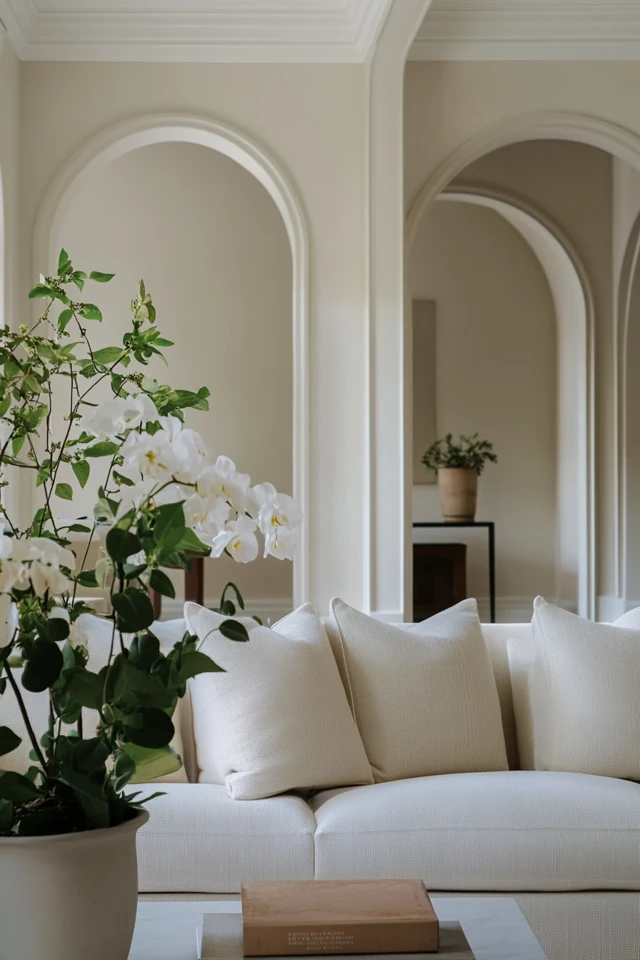
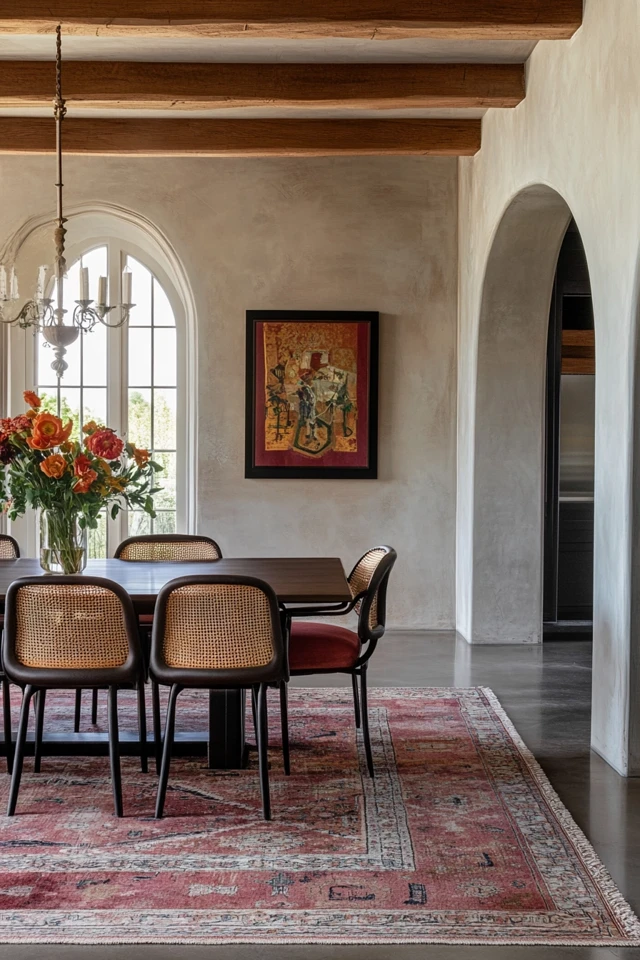
Why Coordinating Decor With Architecture Works
Aligning your decor with your home’s architecture creates a sense of unity and enhances the overall design. Here’s why it works so well:
- Honors the Structure: Highlighting architectural features shows respect for the bones of your home and makes them part of the story.
- Creates Cohesion: Coordinating decor ensures a seamless connection between the room’s design elements, avoiding visual dissonance.
- Enhances Impact: Thoughtfully chosen decor can draw attention to standout architectural details, making them even more impressive.
- Balances Functionality: Decorating with the architecture in mind ensures the space remains practical while looking beautiful.
- Personalizes the Space: Integrating decor and architecture allows you to highlight your home’s uniqueness while showcasing your personal style.
Interior designers often stress the importance of “designing with context.” By working with your home’s architectural features instead of against them, you create spaces that feel harmonious, balanced, and perfectly suited to the space.
How to Coordinate Decor With Architectural Features: Step-by-Step
1. Identify Your Home’s Key Features
- Start by assessing the architectural details in your space:
- Structural Elements: Exposed beams, arches, columns, or fireplaces.
- Built-In Features: Window seats, alcoves, or shelving.
- Ornamentation: Crown moldings, ceiling medallions, or wainscoting.
- Materials: Brick walls, hardwood floors, or metal finishes.
- Decide which features you want to emphasize, downplay, or adapt your decor around.
- Example: In a living room with a dramatic stone fireplace, let it serve as the focal point by arranging furniture to draw attention to it.
2. Work With the Architectural Style
- Coordinate your decor to align with the architectural style of your home:
- Traditional: Use ornate furniture, rich fabrics, and warm colors to complement classic details like crown molding or wainscoting.
- Modern: Opt for sleek, minimalist decor that enhances clean lines and large windows.
- Industrial: Incorporate metal, wood, and exposed pipes into decor that highlights raw, unfinished textures.
- Example: In a mid-century modern home, choose furniture with clean lines, low profiles, and warm wood tones to echo the architecture’s simplicity.
3. Highlight Natural Focal Points
- Use decor to emphasize your home’s built-in focal points:
- Arrange seating around a fireplace or large window.
- Use lighting to draw attention to intricate ceilings or textured walls.
- Frame architectural elements, like arches, with decor that complements their shape.
- Example: In a dining room with a coffered ceiling, a bold chandelier can accentuate the ceiling’s depth and structure.
4. Choose Colors That Complement
- Use a color palette that enhances the architectural elements:
- Match or contrast with natural materials like brick, wood, or stone.
- Use accent colors to highlight details like moldings or trim.
- Stick to neutral tones for subtle architecture, or bold hues to enhance dramatic features.
- Example: In a home with exposed brick walls, earthy tones like terracotta or sage green echo the warmth of the brick without overwhelming it.
5. Use Proportionate Furniture
- Choose furniture that matches the scale and proportions of the room:
- Use tall furniture like bookshelves or armoires in rooms with high ceilings.
- Keep furniture low-profile in spaces with horizontal architectural features, like exposed beams.
- Example: In a room with vaulted ceilings, a tall, dramatic headboard anchors the bed while complementing the vertical space.
6. Incorporate Complementary Textures
- Pair decor textures with the architectural materials for balance:
- Soften hard materials like concrete or brick with plush textiles.
- Contrast smooth finishes, like glass or metal, with woven or wooden accents.
- Example: In an industrial loft, a leather sofa and a wool throw add warmth and texture to the room’s metal and concrete elements.
7. Adapt Decor to Challenging Spaces
- Architectural quirks like sloped ceilings, awkward nooks, or narrow spaces can be turned into design opportunities:
- Use built-in shelving or custom furniture to maximize alcoves.
- Add bold wallpaper or lighting to accentuate unique shapes.
- Example: In an attic bedroom with a sloped ceiling, low furniture and patterned wallpaper create a cozy, stylish retreat.
8. Layer Decor Around Statement Features
- Surround key architectural elements with complementary decor:
- Use rugs, art, or plants to frame a fireplace or bay window.
- Add decor in tiers, layering taller pieces behind shorter ones for depth.
- Example: A reading nook with a window seat feels complete with layered cushions, a throw blanket, and a nearby floor lamp.
9. Use Lighting to Enhance Details
- Lighting can highlight or enhance architectural features:
- Add spotlights or uplights to showcase beams, columns, or textured walls.
- Use sconces or pendant lights to frame doorways, mirrors, or art.
- Example: In a home with intricate crown molding, LED strip lighting installed at the base of the molding creates a subtle, elegant glow.
10. Blend Old and New Thoughtfully
- Combine decor from different eras to create a layered, lived-in feel:
- Pair modern furniture with traditional architectural features for contrast.
- Add vintage pieces to newer spaces for warmth and character.
- Example: In a modern condo with floor-to-ceiling windows, an antique wooden console table adds charm and depth to the sleek design.
FAQ
1. Can I modernize decor in a traditional home?
Yes! Focus on clean lines, neutral colors, and simple decor that doesn’t overwhelm traditional architectural elements like moldings or fireplaces.
2. How do I decorate around a bold architectural feature?
Let it serve as the focal point and use decor to complement or echo its colors, textures, or shapes. Keep other elements understated to avoid competition.
3. How do I make small architectural details stand out?
Use lighting, contrasting paint colors, or decor placement to highlight details like niches, moldings, or built-ins.
4. Can I mix styles with my home’s architecture?
Absolutely! Use a unifying element like a cohesive color palette or repeating materials to create balance between contrasting styles.
5. How do I handle spaces with multiple standout features?
Prioritize one feature as the main focal point, and use subtle decor to complement or frame the others.
Variations
- Historic Charm: Use vintage furniture, ornate lighting, and traditional patterns to enhance classic architectural details.
- Modern Minimalism: Stick to clean lines, neutral colors, and streamlined decor that highlights the simplicity of modern architecture.
- Industrial Vibes: Pair exposed brick, beams, or pipes with metal finishes and raw wood furniture for an edgy look.
- Eclectic Style: Blend furniture and decor from different eras while keeping a consistent color palette to tie everything together.
- Coastal Relaxation: Use light woods, breezy textiles, and natural tones to complement airy spaces with large windows or vaulted ceilings.
How to Showcase It
- Living Rooms: Arrange seating to highlight fireplaces, large windows, or statement walls.
- Bedrooms: Use headboards, rugs, and lighting to frame architectural features like vaulted ceilings or built-in alcoves.
- Dining Rooms: Pair bold lighting with architectural features like coffered ceilings or wainscoting.
- Kitchens: Use open shelving or decorative backsplashes to highlight structural elements like beams or arches.
- Bathrooms: Enhance tile work or unique layouts with complementary mirrors and lighting.
Occasions to Feature It
- Everyday Living: Enjoy a home that feels harmonious and tailored to its architecture.
- Entertaining Guests: Create a polished, intentional design that highlights your home’s standout features.
- Renovation Projects: Use decor to refresh or modernize older architectural elements.
- Seasonal Updates: Add seasonal decor like wreaths or garlands to accentuate architectural focal points.
- Photography Shoots: Showcase your home’s unique architecture with decor that enhances its beauty.
Conclusion
Coordinating your decor with your home’s architectural features is the ultimate way to create spaces that feel cohesive, intentional, and timeless. By working with your home’s structure—whether it’s modern and sleek or full of vintage charm—you can enhance its best qualities while reflecting your personal style.
From highlighting standout features with complementary colors and lighting to adapting decor to challenging spaces, these strategies will help you design a home that feels perfectly balanced and beautifully unique. So embrace the character of your architecture, experiment with these ideas, and turn your house into a harmonious haven that’s as functional as it is stunning.

